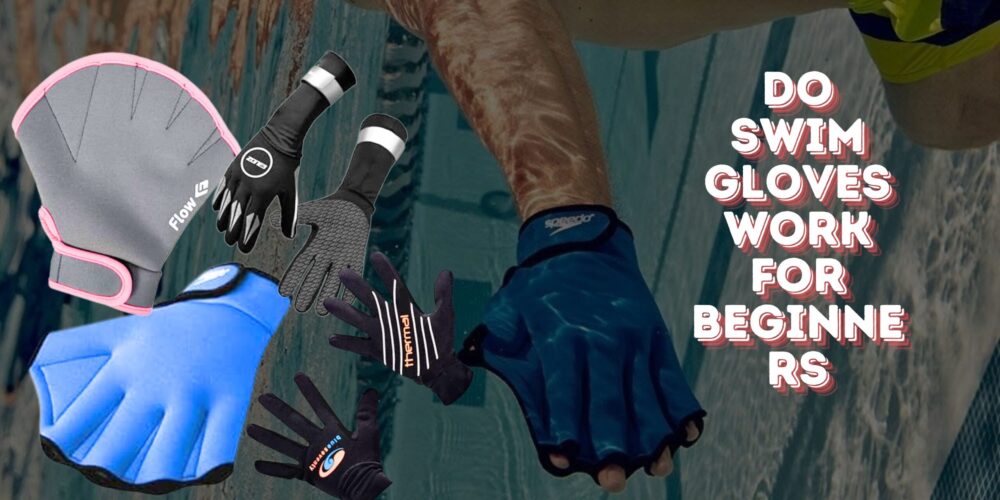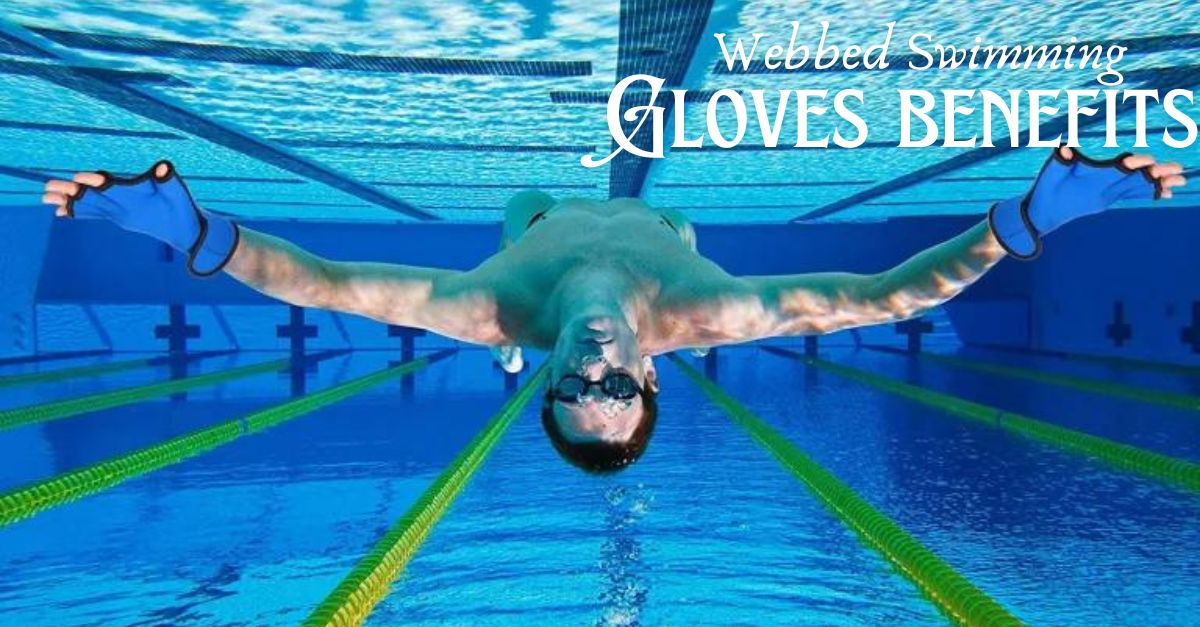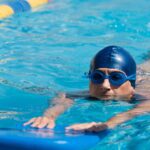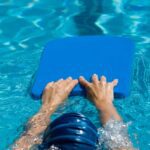Are Swimming Gloves Any Good – The Truth
Are swimming gloves any good? Well, if you think they’ll turn you into the Michael Phelps of your local swim meet, you might want to hold off on that gold medal speech! While they won’t give you superhero speed, swimming gloves are a fantastic tool for enhancing your swim workouts, improving strength, and refining technique.
The benefits of swimming gloves are plenty. They increase water resistance, making each stroke more challenging and thus building muscle and endurance. They’re also great for protecting your hands from the cold and can help improve your swimming form by encouraging a proper hand position in the water.
Whether you’re a beginner looking to get fit or an experienced swimmer seeking to add some variety to your training, swimming gloves offer something valuable. But are swimming gloves any good? Let’s get into it.
Are Swimming Gloves Any Good
Swimming gloves can be a great tool for recreational swimmers, but they’re not for everyone. Unlike superhero gloves granting superhuman feats, they won’t propel you to victory in competitions (they’re actually banned!). But depending on your swimming goals, they can offer some real benefits.
The benefits of swimming gloves are numerous. They add resistance, making each stroke more challenging, helping to develop muscle and improve cardiovascular fitness.
They’re particularly useful for swimmers looking to enhance their upper body strength and improve their stroke technique. Additionally, swimming gloves offer protection against the cold and can prevent hand abrasions, making them ideal for open-water swimming.
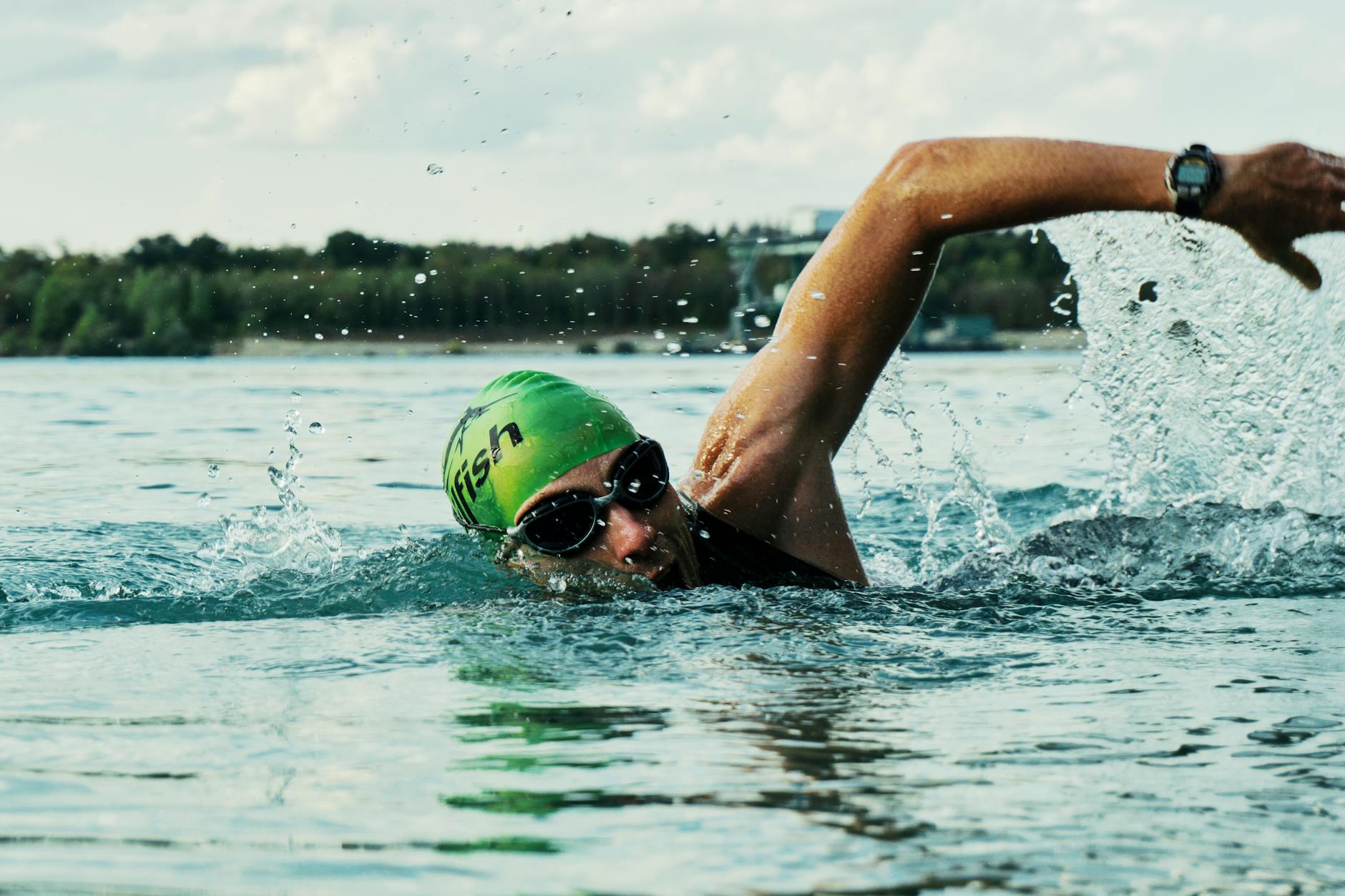
Pros and Cons of Swimming Gloves
While swim gloves aren’t competition-approved, that shouldn’t diminish their potential! Of course, you can train with them and enjoy other watersports with them. Let’s explore the practical benefits and drawbacks they offer:
What Do Swim Gloves Do (Benefits of Swimming Gloves)
- Boost Warmth (neoprene): Ever wished you could extend your swims into chillier waters? Neoprene gloves, with their insulating properties, trap body heat and keep you comfortable in cooler pools or open water.
- Enhance Grip (silicone): Entering or exiting a slippery pool or grabbing rocks by the shore can be tricky. Silicone gloves provide excellent grip, enhancing safety and confidence during transitions.
- Improve Propulsion (webbed): Make your swimming fun with webbed gloves! Increasing the surface area of your hands with webbed swimming gloves can create more resistance in the water, potentially propelling you further with strokes like the butterfly or breaststroke. Keep in mind, that these might require some technique adjustments to avoid feeling awkward.
- Hand protection: Blisters or abrasions can sideline even the most enthusiastic swimmer. Silicone gloves offer a layer of protection against rough surfaces or minor cuts you might encounter during open-water swims or exercises.
Drawbacks of Swimming Gloves
- Reduced feel for the water: Some swimmers find that gloves can affect their feel for the water, potentially impacting stroke technique.
- Bulkiness: Depending on the type, swim gloves can feel bulky and limit dexterity, especially compared to swimming barehanded.
- Muscle fatigue: The added resistance of webbed gloves can put extra strain on your forearms, leading to fatigue if you’re not used to them.
Types of Swim Gloves
Swim gloves come in different varieties. Depending on your swimming requirements, here are some of the most popular swim gloves:
| Type of Swim Gloves | Description |
| Webbed Swim Gloves | These gloves have webbing between the fingers, mimicking the effect of a duck’s feet. The webbing increases resistance in the water, making it ideal for building strength and improving stroke technique. |
| Neoprene Swim Gloves | Made from the same material as wetsuits, neoprene swim gloves provide insulation and are perfect for swimming in cold water. They also offer some buoyancy and protection against abrasions. |
| Fingerless Swim Gloves | Fingerless swim gloves leave the fingers exposed while covering the palm and back of the hand. They provide some protection while allowing for a more natural swimming feel and better dexterity. |
| Full-Finger Swim Gloves | Covering the entire hand, including the fingers, these gloves offer maximum resistance and protection. They are suitable for swimmers looking for an intense workout and enhanced hand protection. |
| Paddle Gloves | These gloves have small paddles or plates embedded in the palms. They provide substantial resistance and are excellent for strength training and improving swim power. |
| Silicone Swim Gloves | Made from flexible silicone, these gloves offer a snug fit and are durable. They provide good resistance and are easy to clean and maintain. |
| Adjustable Swim Gloves | They come with adjustable straps or fastenings, allowing for a customized fit. They are versatile and can be tightened or loosened based on the swimmer’s preference. |
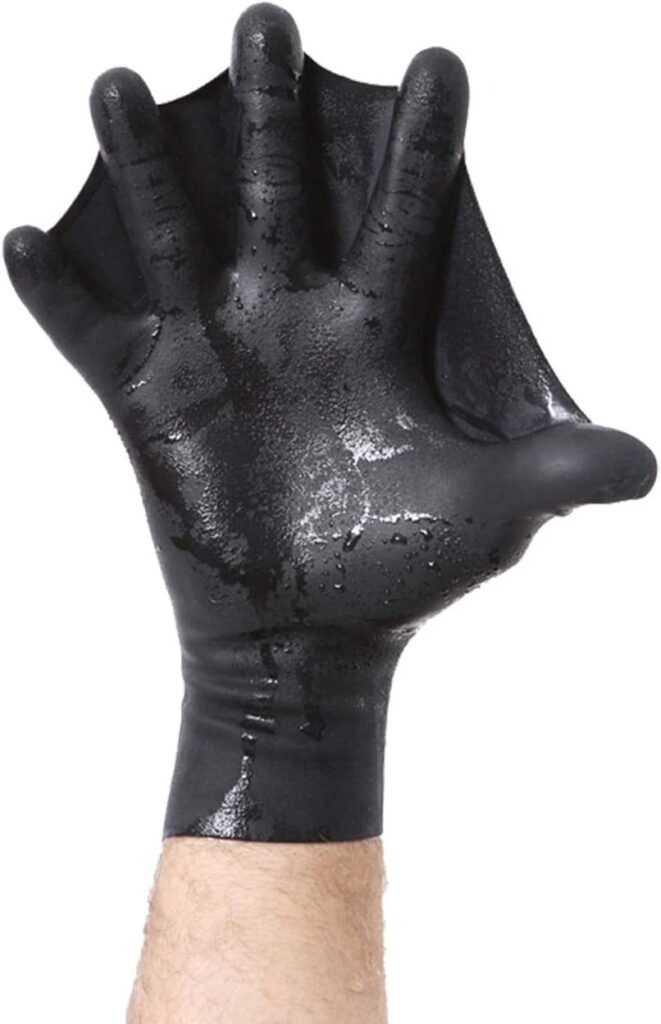
How To Choose The Right Swimming Gloves
Choosing the right swimming gloves involves considering several factors to ensure they meet your specific needs and preferences. Here are some key points to help you make the best choice:
1. Purpose and Goals
- Training and Strength Building: If your primary goal is to build strength and improve technique, look for gloves that provide significant resistance, such as webbed or paddle gloves.
- Cold Water Swimming: For swimming in cold conditions, neoprene gloves are ideal due to their insulation properties.
- Rehabilitation and Therapy: If you are looking for a glove for therapeutic purposes, choose gloves that offer moderate resistance and comfort, such as silicone or adjustable gloves.
2. Fit and Comfort
- Size: Ensure the gloves fit snugly without being too tight. Measure your hand according to the manufacturer’s size guide.
- Adjustability: Some gloves come with adjustable straps, allowing for a customized fit. This feature can be particularly useful if your hand size is between standard sizes.
- Comfort: Look for gloves with soft, comfortable materials that won’t irritate your skin during extended use.
3. Material
- Neoprene: Great for insulation and durability. Perfect for cold water and open water swimming.
- Silicone: Flexible, durable, and easy to maintain. Suitable for various swimming activities.
- Rubber: Often used in webbed gloves for increased resistance. Ensure the rubber is soft and flexible to avoid discomfort.
4. Design and Features
- Webbing: Webbed gloves provide increased resistance and are excellent for strength training.
- Finger Coverage: Decide between full-finger, fingerless, or partial-finger designs based on your preference for flexibility and resistance.
- Grip: Some gloves come with textured palms to improve grip, which can be useful for aquatic fitness classes or water aerobics.
5. Durability and Maintenance
- Durability: Check reviews and product descriptions for information on the glove’s lifespan and durability.
- Maintenance: Consider how easy the gloves are to clean and dry. Materials like silicone are typically easy to maintain.
6. Brand and Reviews
- Reputable Brands: Choose gloves from well-known brands with positive reviews to ensure quality and reliability.
- User Reviews: Read reviews from other swimmers to get insights into the gloves’ performance and comfort.
7. Budget
- Price Range: Determine your budget and compare gloves within that range. Higher-priced gloves often offer better materials and durability.
- Value for Money: Ensure the gloves you choose offer good value in terms of performance, durability, and features.
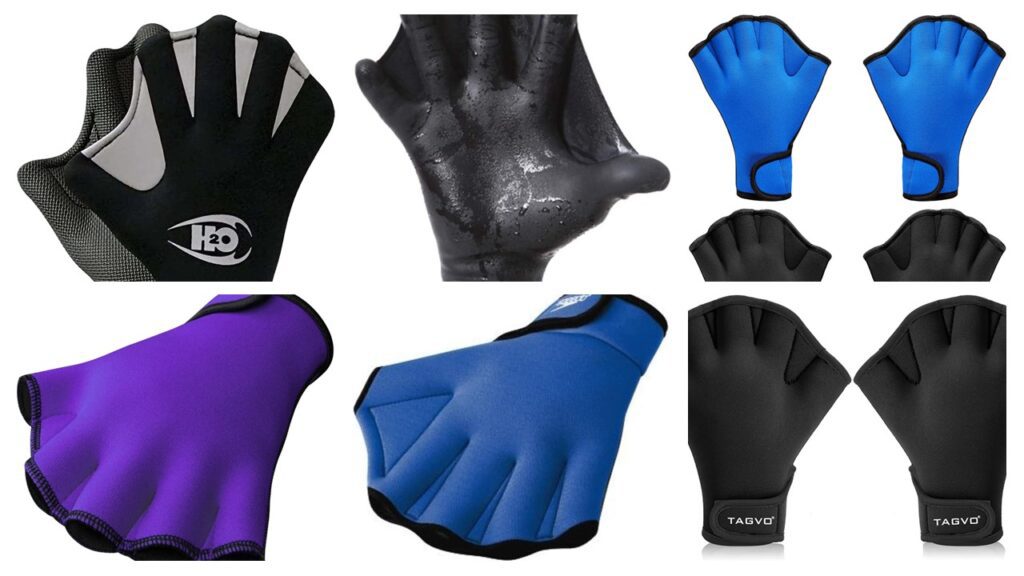
Proper Techniques For Using Swimming Gloves
Swimming gloves can add a fun and functional twist to your swim routine, but using them effectively requires proper technique. Here are some key points to note:
1. Proper Fit and Adjustment
- Choose the Right Size: Ensure your swimming gloves fit snugly without being too tight. Refer to the manufacturer’s sizing chart and measure your hands accurately.
- Adjust Straps if Available: If the gloves come with adjustable straps, secure them comfortably to avoid slipping during your swim.
2. Warm-Up and Stretching
- Warm-Up: Start with a light swim or gentle exercises to warm up your muscles before putting on the gloves.
- Stretch: Perform arm and shoulder stretches to prepare your muscles for the added resistance.
3. Entry into the Water
- Gradual Entry: Enter the water gradually, allowing your body to adjust to the temperature and the resistance of the gloves.
- Initial Strokes: Begin with slow, controlled strokes to get accustomed to the feel and resistance of the gloves.
4. Proper Hand Position
- Open Fingers: Ensure your fingers are spread open to maximize the surface area and resistance but it should be natural.
- Flat Hands: Keep your hands flat and in line with your forearms to maintain proper technique and reduce drag.
5. Swimming Strokes
Freestyle
- Hand Entry: Enter the water with your fingertips first, maintaining a streamlined hand position.
- Pull Phase: Pull through the water with a high elbow and a straight wrist, keeping your fingers spread naturally.
- Finish: Finish the stroke with a strong push past your hips, maintaining a flat hand.
Backstroke
- Hand Entry: Enter the water with your pinky finger first, ensuring your hand is flat and fingers spread.
- Pull Phase: Pull with a straight wrist and a high elbow, focusing on a smooth, controlled motion.
- Finish: Finish the stroke with a strong push past your hips, maintaining proper hand position.
Breaststroke
- Outsweep: Start with your hands together in front of your chest, then sweep them outward with your fingers spread.
- Insweep: Bring your hands back together under your chin, focusing on a smooth and controlled motion.
- Recovery: Recover your hands to the starting position, maintaining a flat hand and proper technique.
Butterfly
- Hand Entry: Enter the water with your hands slightly wider than your shoulders, keeping your fingers spread.
- Pull Phase: Pull through the water with both hands simultaneously, maintaining a high elbow and straight wrist.
- Finish: Finish the stroke with a strong push past your hips, keeping your hands flat and fingers open.
6. Breathing Techniques
- Consistent Breathing: Breathe consistently and rhythmically to maintain a steady pace and prevent fatigue.
- Exhale Underwater: Exhale fully underwater to prepare for a quick inhale during the recovery phase of your stroke.
7. Monitoring and Adjustment
- Monitor Fatigue: Pay attention to signs of fatigue in your arms and shoulders. Take breaks as needed to prevent overexertion.
- Adjust Intensity: Adjust the intensity of your workout by varying the speed and force of your strokes.
8. Cool Down and Stretching
- Cool Down: Finish your workout with a light swim or gentle exercises to cool down your muscles.
- Stretch: Perform arm and shoulder stretches to relax your muscles and prevent stiffness.
The Bottom Line on Are Swimming Gloves Any Good
So, are swimming gloves any good? Yes, they are good but just for building strength and for protection. Of course, swimming gloves are not allowed in competitions but you can use them for fun, training, recovery and for other watersports.
